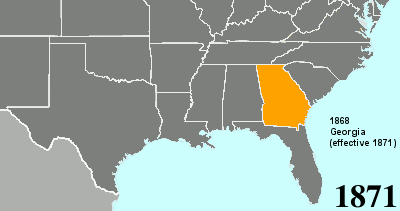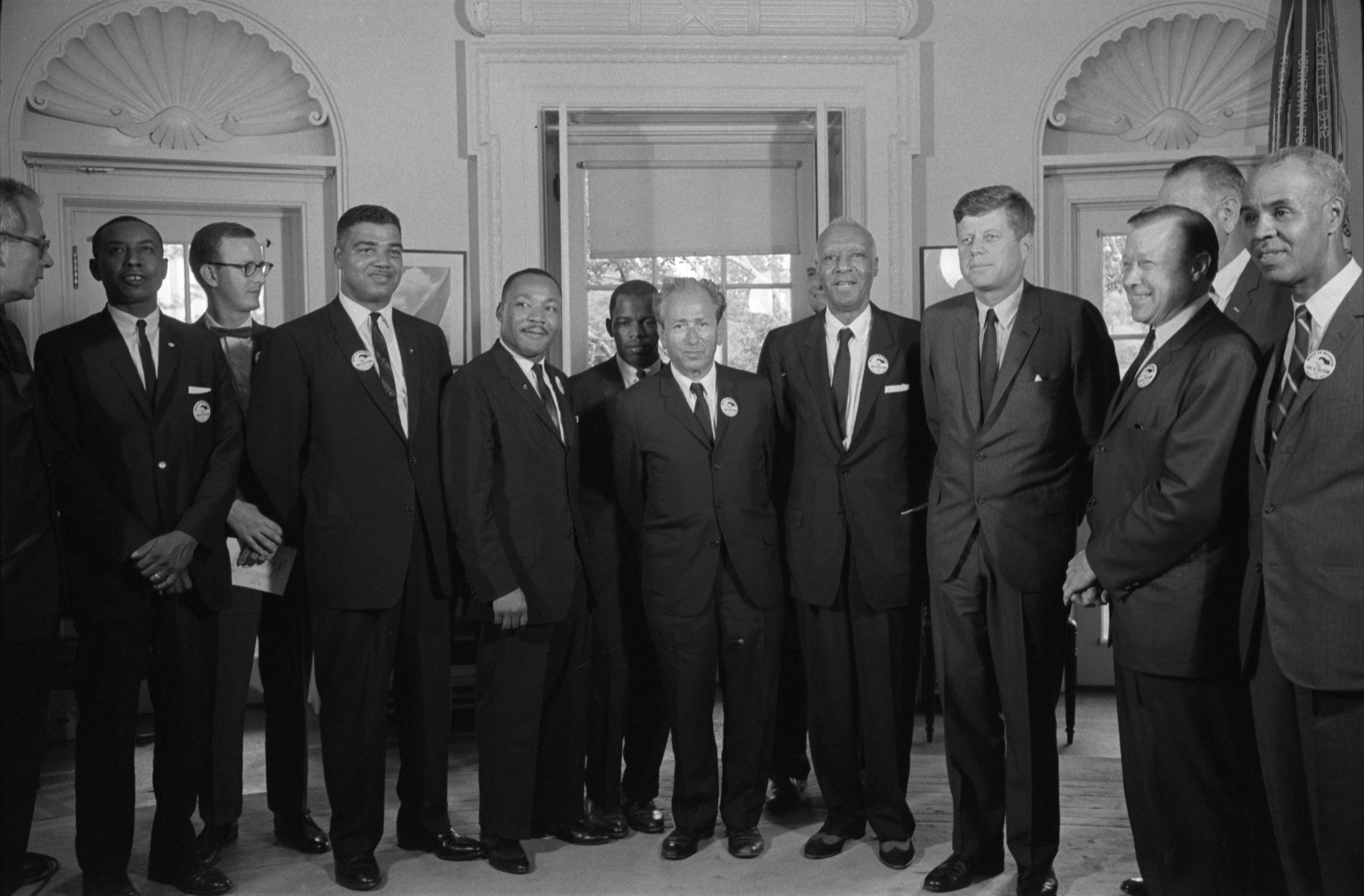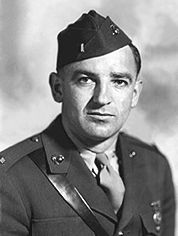|
Alvin E. O'Konski
Alvin Edward O'Konski (May 26, 1904July 8, 1987) was an American politician and educator who served 30 years in the United States House of Representatives. A Republican, he represented northwestern Wisconsin from 1943 until 1973. Early life and education O'Konski was born on a farm near Kewaunee, Wisconsin to Antonia ( Paska) and Frank O'Konski, on May 26, 1904. He attended the local public schools and the University of Iowa. He graduated from State Teachers College (now University of Wisconsin–Oshkosh) in Oshkosh, Wisconsin in 1927, and from the University of Wisconsin (now University of Wisconsin–Madison) in 1932. Career He was a high school teacher in Omro and Oconto from 1926 to 1929, a member of the faculty of Oregon State College at Corvallis, Oregon, from 1929 to 1931, and a faculty member at the University of Detroit from 1936 to 1938. He was superintendent of schools in Pulaski, Wisconsin, from 1932 to 1935 and an instructor at a junior college in Colerain ... [...More Info...] [...Related Items...] OR: [Wikipedia] [Google] [Baidu] |
Wisconsin
Wisconsin ( ) is a U.S. state, state in the Great Lakes region, Great Lakes region of the Upper Midwest of the United States. It borders Minnesota to the west, Iowa to the southwest, Illinois to the south, Lake Michigan to the east, Michigan to the northeast, and Lake Superior to the north. With a population of about 6 million and an area of about 65,500 square miles, Wisconsin is the List of U.S. states and territories by population, 20th-largest state by population and the List of U.S. states and territories by area, 23rd-largest by area. It has List of counties in Wisconsin, 72 counties. Its List of municipalities in Wisconsin by population, most populous city is Milwaukee; its List of capitals in the United States, capital and second-most populous city is Madison, Wisconsin, Madison. Other urban areas include Green Bay, Wisconsin, Green Bay, Kenosha, Wisconsin, Kenosha, Racine, Wisconsin, Racine, Eau Claire, Wisconsin, Eau Claire, and the Fox Cities. Geography of Wiscon ... [...More Info...] [...Related Items...] OR: [Wikipedia] [Google] [Baidu] |
Pulaski, Wisconsin
Pulaski ( ) is a village in Brown, Oconto, and Shawano counties in the U.S. state of Wisconsin. The population was 3,870 at the 2020 census. Of this, 3,650 were in Brown County, 220 in Shawano County, and none in Oconto County. The Brown and Oconto County portions of Pulaski are part of the Green Bay Metropolitan Statistical Area. History The village was named after the Polish Revolutionary War general Casimir Pulaski, who was responsible for creating America's first cavalry. Geography According to the United States Census Bureau, the village has a total area of , of which, of it is land and is water. Most of the village is located in Brown County, with only small portions extending north into Oconto County and west into Shawano County. Climate Demographics 2010 census As of the census of 2010, there were 3,539 people, 1,418 households, and 934 families living in the village. The population density was . There were 1,525 housing units at an average density of . Th ... [...More Info...] [...Related Items...] OR: [Wikipedia] [Google] [Baidu] |
Voting Rights Act Of 1965
The Voting Rights Act of 1965 is a landmark piece of federal legislation in the United States that prohibits racial discrimination in voting. It was signed into law by President Lyndon B. Johnson during the height of the civil rights movement on August 6, 1965, and Congress later amended the Act five times to expand its protections. Designed to enforce the voting rights protected by the Fourteenth and Fifteenth Amendments to the United States Constitution, the Act sought to secure the right to vote for racial minorities throughout the country, especially in the South. According to the U.S. Department of Justice, the Act is considered to be the most effective piece of federal civil rights legislation ever enacted in the country. The National Archives and Records Administration stated: "The Voting Rights Act of 1965 was the most significant statutory change in the relationship between the federal and state governments in the area of voting since the Reconstruction peri ... [...More Info...] [...Related Items...] OR: [Wikipedia] [Google] [Baidu] |
Twenty-fourth Amendment To The United States Constitution
The Twenty-fourth Amendment (Amendment XXIV) of the United States Constitution prohibits both US Congress, Congress and the US states, states from requiring the payment of a Poll taxes in the United States, poll tax or any other tax to vote in US federal election, federal elections. The amendment was proposed by Congress to the states on August 27, 1962, and was ratified by the states on January 23, 1964. Southern United States, Southern states of the former Confederate States of America adopted Poll taxes in the United States, poll taxes both in their state laws and in their state constitutions throughout the late-19th and early-20th centuries. This became more widespread as the Democratic Party regained control of most levels of government in the South in the decades after Reconstruction era of the United States, Reconstruction. The purpose of poll taxes was to prevent African Americans and poor whites from voting. Use of the poll tax by states was held to be constitutional b ... [...More Info...] [...Related Items...] OR: [Wikipedia] [Google] [Baidu] |
Civil Rights Act Of 1968
The Civil Rights Act of 1968 () is a Lists of landmark court decisions, landmark law in the United States signed into law by President of the United States, United States President Lyndon B. Johnson during the King assassination riots. Titles II through VII comprise the Indian Civil Rights Act, which applies to the Native Americans in the United States, Native American tribes of the United States and makes many but not all of the guarantees of the United States Bill of Rights, U.S. Bill of Rights applicable within the tribes. (That Act appears today in Title 25, sections 1301 to 1303 of the United States Code). Titles VIII and IX are commonly known as the Fair Housing Act, which was meant as a follow-up to the Civil Rights Act of 1964. (This is different legislation than the Housing and Urban Development Act of 1968, which expanded housing funding programs.) While the Civil Rights Act of 1866 prohibited discrimination in housing, there were no federal enforcement provisions. T ... [...More Info...] [...Related Items...] OR: [Wikipedia] [Google] [Baidu] |
Civil Rights Act Of 1964
The Civil Rights Act of 1964 () is a landmark civil rights and United States labor law, labor law in the United States that outlaws discrimination based on Race (human categorization), race, Person of color, color, religion, sex, and national origin. It prohibits unequal application of voter registration requirements, racial segregation in schools and public accommodations, and employment discrimination. The act "remains one of the most significant legislative achievements in American history". Initially, powers given to enforce the act were weak, but these were supplemented during later years. Congress asserted its authority to legislate under several different parts of the United States Constitution, principally its Enumerated powers (United States), enumerated power to regulate interstate commerce under the Commerce Clause of Article One of the United States Constitution#Section 8: Powers of Congress, Article I, Section 8, its duty to guarantee all citizens Equal Protectio ... [...More Info...] [...Related Items...] OR: [Wikipedia] [Google] [Baidu] |
Civil Rights Act Of 1960
The Civil Rights Act of 1960 () is a United States federal law that established federal inspection of local voter registration polls and introduced penalties for anyone who obstructed someone's attempt to register to vote. It dealt primarily with discriminatory laws and practices in the segregated South, by which African-Americans and Tejanos had been effectively disenfranchised since the late 19th and start of the 20th century. This was the fifth Civil Rights Act to be enacted in United States history. Over an 85-year period, it was preceded only by the Civil Rights Act of 1957, whose shortcomings largely influenced its creation. This law served to more effectively enforce what was set forth in the 1957 act through eliminating certain loopholes in it, and to establish additional provisions. Aside from addressing voting rights, the Civil Rights Act of 1960 also imposed criminal penalties for obstruction of court orders to limit resistance to the Supreme Court's school desegrega ... [...More Info...] [...Related Items...] OR: [Wikipedia] [Google] [Baidu] |
Civil Rights Act Of 1957
The Civil Rights Act of 1957 was the first federal civil rights law passed by the United States Congress since the Civil Rights Act of 1875. The bill was passed by the 85th United States Congress and signed into law by President Dwight D. Eisenhower on September 9, 1957. The Supreme Court's 1954 ruling in the case of '' Brown v. Board of Education'' brought the issue of school desegregation to the fore of public attention, as Southern Democratic leaders began a campaign of " massive resistance" against desegregation. In the midst of this campaign, President Eisenhower proposed the bill to provide federal protection for African American voting rights; most African Americans in the Southern United States had been disenfranchised by state and local laws. Though the bill passed Congress, opponents of the act were able, in the Senate, to remove stringent voting protection clauses via the Anderson–Aiken amendment and the O'Mahoney jury trial amendment, significantly watering ... [...More Info...] [...Related Items...] OR: [Wikipedia] [Google] [Baidu] |
Joseph McCarthy
Joseph Raymond McCarthy (November 14, 1908 – May 2, 1957) was an American politician who served as a Republican Party (United States), Republican United States Senate, U.S. Senator from the state of Wisconsin from 1947 until his death at age 48 in 1957. Beginning in 1950, McCarthy became the most visible public face of a period in the United States in which Cold War tensions fueled fears of widespread Communism, communist Subversion (politics), subversion. He alleged that numerous communists and Soviet Union, Soviet spies and sympathizers had infiltrated the United States federal government, universities, film industry, and elsewhere. Ultimately he was censured by the Senate in 1954 for refusing to cooperate with and abusing members of the committee established to investigate whether or not he should be censured. The term "McCarthyism", coined in 1950 in reference to McCarthy's practices, was soon applied to similar anti-communism, anti-communist activities. Today the term is ... [...More Info...] [...Related Items...] OR: [Wikipedia] [Google] [Baidu] |
United States Senator
The United States Senate consists of 100 members, two from each of the 50 U.S. state, states. This list includes all senators serving in the 119th United States Congress. Party affiliation Independent Senators Angus King of Maine and Bernie Sanders of Vermont Senate Democratic Caucus, caucus with the Democratic Party. Leadership Presiding officers Majority leadership (Republican) Minority leadership (Democratic) List of senators See also * Seniority in the United States Senate * List of current members of the United States House of Representatives * List of members of the United States Congress by longevity of service * List of United States Senate committees * List of United States congressional joint committees * Religious affiliation in the United States Senate * Shadow congressperson Notes References {{US Order of Precedence 117th United States Congress, ** 21st-century United States government officials, Senate Lists of current office-holders ... [...More Info...] [...Related Items...] OR: [Wikipedia] [Google] [Baidu] |
1957 United States Senate Elections
Democrat William Proxmire won a special election to fill the vacancy created by the death of Senator Joseph R. McCarthy (R-WI). Also, Price Daniel (D-TX) left the Senate to become governor of Texas, and Democrat Ralph Yarborough won a special election for that Senate seat. The Democrats thus made a net gain of one seat. However, Congress was out of session at the time of the Democratic gain in Wisconsin, and the Republicans gained a Democratic-held seat only weeks after the next session started, when Republican John D. Hoblitzell Jr. was appointed to fill the vacancy created by the death of Senator Matthew M. Neely (D-WV). Race summary Ordered by election date. Texas One-term Democrat Price Daniel resigned January 14, 1957 to become Governor of Texas. Daniel appointed Democrat William A. Blakley January 15, 1957. In 1956, Allan Shivers opted not to run for a fourth term as Governor of Texas; Senator Price Daniel, as a sitting U.S. Senator was elected Governor of Tex ... [...More Info...] [...Related Items...] OR: [Wikipedia] [Google] [Baidu] |
Wisconsin's 10th Congressional District
Wisconsin's 10th congressional district is a former congressional district of the United States House of Representatives in Wisconsin. It was created following the 1890 United States census, 1890 census, and was abolished after the 1970 United States census, 1970 census. Throughout its existence it was located in the northwest or north of Wisconsin. Between the 1900 United States census, 1900 census and the 1930 United States census, 1930 census, when Wisconsin had its greatest ever representation of eleven districts, the 10th district covered initially the rural area bordering Michigan, but after redistricting in 1910 it was shifted to the west of the state bordering Minnesota. After 1930, the old 11th district covering the northwest bordering Lake Superior was absorbed into the 10th district for the remainder of its existence. With the sole exception of Bernard J. Gehrmann, who represented the district as a Wisconsin Progressive Party, Progressive from 1935 to 1943, all represe ... [...More Info...] [...Related Items...] OR: [Wikipedia] [Google] [Baidu] |




